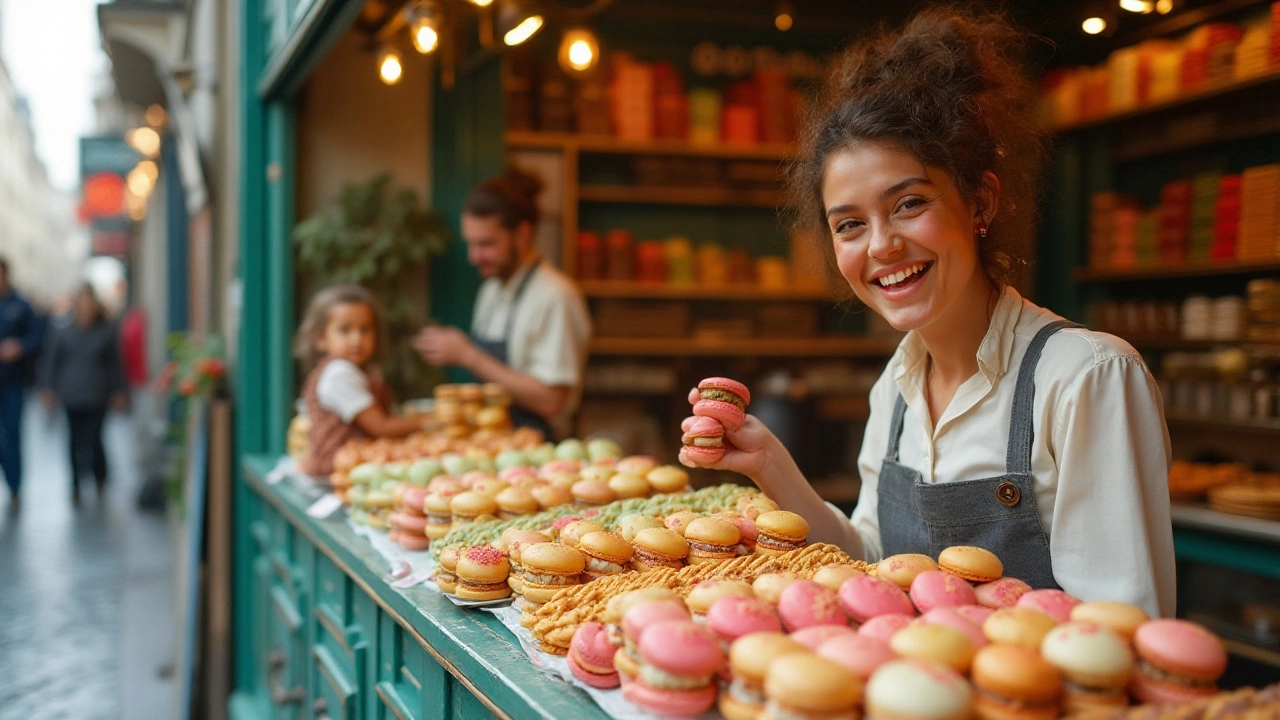French Pastries: Classic Treats, Tips, and Where to Find Them
If you love sweet, buttery bites, French pastries should be on your radar. They’re not just for fancy cafés – you can bake many at home with a few simple steps. Below you’ll get a quick rundown of the most popular treats, handy tips for making them, and where to hunt down the real deal in France.
Everyday French Favorites
Start with the basics: croissants, pain au chocolat, and éclairs. A croissant is all about layers – keep the dough cold, roll it thin, and fold it three times for that flaky texture. If you add a chocolate bar before the final roll, you get a pain au chocolat that melts in your mouth. For éclairs, the key is a smooth choux pastry; pipe it into long sticks, bake until puffy, then fill with whipped cream or pastry cream and drizzle chocolate on top.
Macarons are another everyday star. The article “Where to Eat Macarons in France: The Ultimate Guide” shows that the best ones have a crisp shell and a chewy interior. To copy that at home, sift almond flour and icing sugar, beat egg whites to stiff peaks, and let the shells rest before baking. A simple ganache or fruit jam filling works wonders.
Special Occasion Pastries
When you need something extra, think of Galette des Rois, mille‑feuille, and tarte Tatin. Galette des Rois, covered in the “What Makes Galette des Rois the Undisputed King of Cakes?” post, is a puff‑pastry cake with almond cream inside. It’s traditionally served on Epiphany. Keep the butter cold, roll the dough thin, and spread a generous layer of frangipane before baking.
Mille‑feuille stacks layers of puff pastry with vanilla pastry cream. The secret is to bake the pastry until completely dry, then chill the cream so it stays firm. Slice with a sharp knife to keep the layers neat. For tarte Tatin, caramelize apples first, then cover with dough and bake upside‑down – the result is a sweet, sticky upside‑down tart that’s perfect for autumn.
If you’re travelling, head to Paris’s Saint‑Honoré or Lyon’s Les Halles for authentic versions. The macaron guide suggests avoiding tourist traps by looking for shops that bake fresh daily and display a variety of seasonal flavors.
When you try these at home, remember a few universal tips: always use room‑temperature ingredients unless the recipe says otherwise, don’t over‑mix batter, and let pastries rest after baking. Resting lets flavors settle and makes cutting easier.
Whether you’re a beginner or an experienced baker, French pastries are rewarding because they’re simple in concept but impressive in taste. Grab the basic ingredients, follow the steps, and you’ll have a little piece of France on your plate.
Ready to bake? Pick a recipe, set a timer, and enjoy the process. The effort you put in shows up in every flaky bite, and soon you’ll be sharing these treats with friends and family, just like a true French pâtissier.


